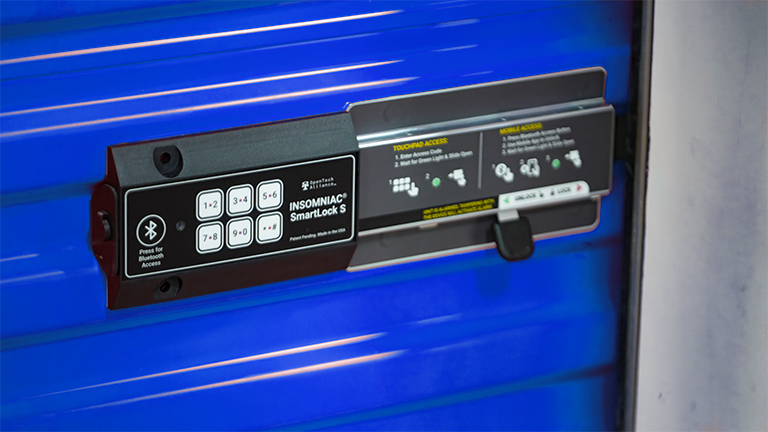The Regional Managers in Trachte’s sales department work with a wide variety of customers. Some of the largest names in storage purchase Trachte Buildings; but many of our clients are new to self-storage. In fact, many of our clients have never built a commercial grade project. This means not only are they learning about self-storage, but they are also learning how to navigate through the permitting and commercial design development process.
Let’s start with a quick rundown of what approvals you might need. Not every project involves every one of these. Look on the websites of these organizations for zoning maps, ordinances, and processes to get your building permits.
Local Zoning Authority: One of the first questions is whether your property is zoned correctly. Even if it is zoned correctly, you may need a conditional use permit. There may also be a local architectural review board that sets standards regarding materials, landscaping, and general appearance.
Local City/Town/County: You’ll need a building permit. Your town/city/county engineer will help you navigate the process and tell you what you have failed to provide them. They will also typically charge you an hourly rate for their reviews, which may rival the expense of your civil engineer, so you want to be direct and efficient in your communications with them. They will typically not issue a building permit until you prove that you have whatever is needed from every other agency.
State: Some states require a state level building permit. This may require some life safety or mechanical planning.
DNR: This will vary by state and project size, but nearly every project needs to have a stormwater plan. The state DNR and local standards may vary. The DNR regulations regarding water outflow will impact what size pond you need when some of your land becomes impervious.
DOT: If your project is located on a county highway, you’ll need authorization from the state Department of Transportation to place a driveway. For sites on local roads, you’ll likely need a driveway permit at a local government level. In some cases, developers may be required to pay for additional improvements such as turning lanes or breaks in medians.
Fire Department: Your local fire chief will likely need to sign off on your project. He or she will be concerned about compliance with regulations governing firewalls, sprinklers and fire hydrant location. The Fire Department will also want to ensure that the site driveways are designed to accommodate their apparatus.
Chances are, one or more of these authorities will find something that you didn’t think of, and it won’t be something cheap. For that reason, it’s not a good idea to finalize your lending until after you have your site designed and into the permit process.
The next question is how to get through these approvals? One of the key items to keep in mind is that while your Trachte Regional Manager can offer some guidance on what to expect, Trachte is not a general contractor. Here’s a run down of the various titles you’ll hear thrown around, and what they do:
Feasibility Consultant: Your lender may require a feasibility study from a third party. Trachte does not serve as a feasibility consultant. We do our best through our web site and seminars to help you understand how to evaluate a project and create financial projections – but in the end, it is up to you to determine if a project is a wise investment. We have a list of experienced consultants available.
General Contractor: Let me repeat, Trachte is not a general contractor (GC). For many simple projects, the owner/developer can be their own general contractor. On larger or more complex projects, you’ll want to hire a local GC that coordinates construction activities. They’ll hire and supervise the various trades and may be responsible for working with various engineers to navigate the building permit process.
Civil Engineer: Your civil engineer is responsible for preparing stormwater plans and grading plans. In some cases, Trachte will assist with building layout, Trachte will not invest time and resources to prepare site plans that are not based on accurate survey information from your civil engineer. To be blunt, if you do not have enough faith in your project to invest in basic design work, we don’t either. A good way to find a local civil engineer is to ask your city’s engineering department who they recommend. Also, if there are other recent construction projects near your site, explore using that same civil engineer. They are likely to be familiar with your local government and, soil conditions and grading contractors. Trachte doe NOT provide civil engineering services and our preliminary site plans are not a substitute for a professional civil engineer.
Surveyor: The surveyor is responsible for locating various site elements for the other trades and engineers. The surveyor may be part of the same firm as your civil engineer. They will mark out corners for buildings, locations of driveways, and anything else that is location critical.
Structural Engineer: This is a licensed professional who stamps the building plans. Trachte provides stamped foundation and building plans as part of the building package. These plans may be purchased for a fee in advance of the building purchase (helpful for developers who do not have the financing in place). Trachte employees Structural Engineers who are licensed in all 50 states and Canada.
Architect: If your project has an office or climate-controlled units, you will likely need an architect. Your architect will help you with preparation of life safety planning. This includes details such as where exit signs and emergency interior lighting will be located. Your architect can also draw out details on the various custom exterior finishes that can be installed onto the Trachte Buildings. Trachte can provide AutoCAD files of the building layout to serve as the foundation for your architect’s work, but Trachte does not provide architectural services and renderings. The architect will also be responsible for energy calculations if required.
Mechanical Engineer: On a simple project, you as the project owner may be able to simply sketch out where you want lights and outlets and your electrician will make it happen. On more complex projects, you’ll need a mechanical engineer to draw up electrical and HVAC plans. You may find that your HVAC subcontractor can provide this service, but he aware that doing that may lock you into that one vendor and make it more difficult to solicit multiple bids.
Supervising Engineer: Some areas require a Supervising Engineer. This person is responsible for checking work during the construction process. He or she will ensure that important details of the project are constructed properly – foundations and structural fasteners for example. They ensure that the plans are followed and that you are getting what you paid for. This is typically a local professional and may be from the same firm as your civil engineer. Trachte does not act as the supervising engineer.
Hopefully this helps your understanding of the roles and responsibilities of your team during the construction process. A good developer makes it look easy, but a lot of work goes into the planning, approval, and construction of even a simple self-storage project. Got more questions or think I missed something important? Let me know – shoot an e-mail to shajewski@trachte.com.


